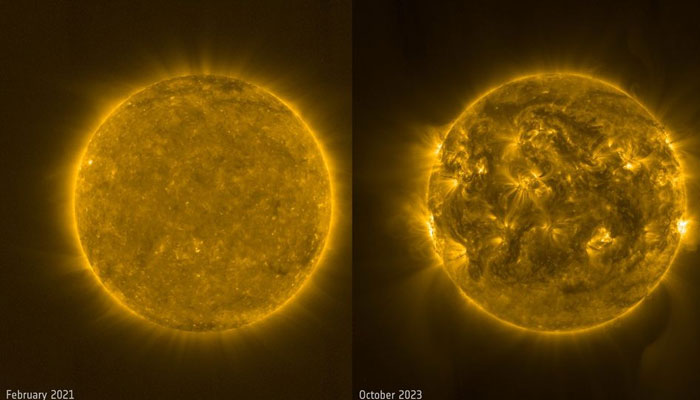As the sun hurtles towards its solar maximum this year, a compelling visualisation from the European Space Agency (ESA) captures the escalating tumult on the sun’s surface.
The solar maximum, occurring approximately every 11 years, marks a pinnacle in solar activity, driven by the sun’s dynamic and ever-shifting magnetic fields. This period sees a surge in the frequency and intensity of sunspots on the solar surface.
Utilising imagery from the Extreme Ultraviolet Imager (EUI) instrument on ESA’s Solar Orbiter, astronomers have meticulously crafted a visualisation depicting the sun’s transformation from February 2021 to October 2023.
The imagery reveals brilliant explosions, dark sunspots, and mesmerising loops of plasma and super-hot gas as the sun propels towards its magnetic activity peak.

Solar cycle 25, the ongoing cycle, is anticipated to reach its climax in mid-to-late 2024, a year earlier than initial estimates.
The solar minimum, characterised by reduced solar activity, occurred in December 2019, just preceding the launch of Solar Orbiter.
ESA officials explain the cyclical nature of solar activity, stating, “At the beginning of this cycle (the solar minimum), there is relatively little activity and few sunspots.”
The activity steadily intensifies until reaching its zenith during the solar maximum, eventually subsiding to a minimum.
Comparing images from February 2021 to October 2023, the visualisation vividly illustrates the sun’s transition from relative calmness to heightened activity during Solar Orbiter’s close approach.







